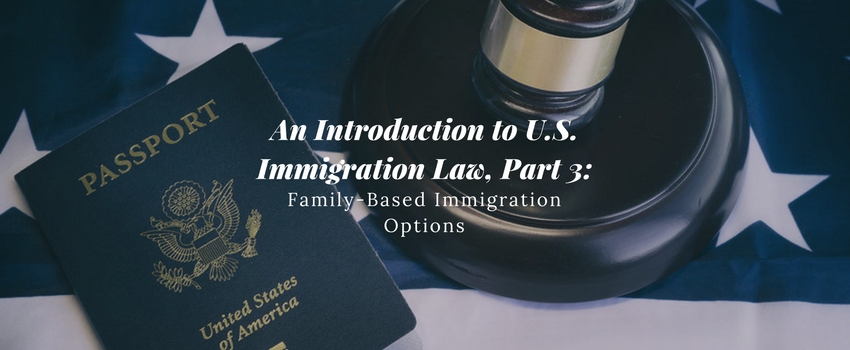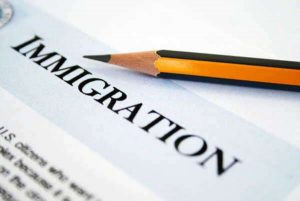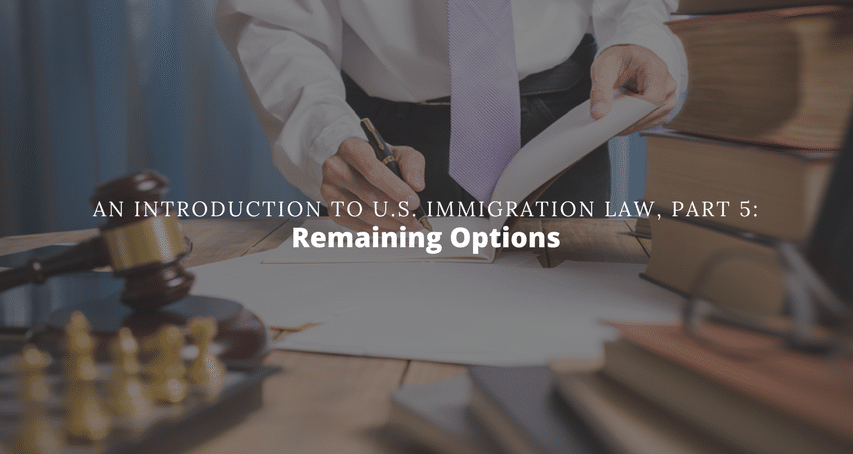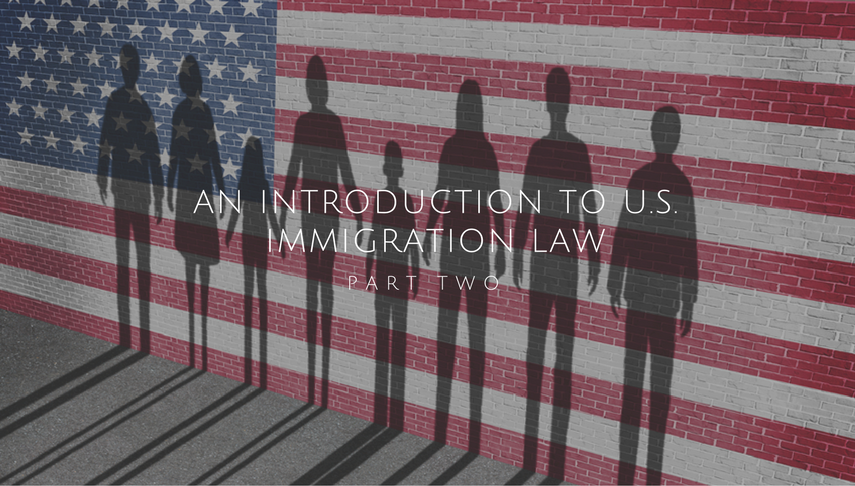An Introduction to U.S. Immigration Law, Part 3:
Family-Based Immigration Options
This is the third part in our Series: An Introduction to U.S. Immigration Law. In Part 1, we talked about the distinction between immigration status and a visa. In Part 2, we talked about the distinction between immigrant and non-immigrant status. Today, we’re going to talk about another major theme of U.S. immigration law: family-based immigration options.
U.S. immigration law provides for two primary pathways to obtaining a visa and/or legal status in the United States. One of the most common pathways is through family-based immigration. (Business and Employment-based immigration, the other primary pathway, as well as some additional immigration options, will be discussed later in this series.)

Under the family-based immigration framework, U.S. citizens and Legal Permanent Residents (LPRs) can petition for qualifying family members. If this petition is approved, the qualifying family members can then apply for an immigrant visa (or if they are already in the United States, they may be able to apply for Adjustment of Status to become permanent residents).
The primary policy behind family-based U.S. immigration law is a belief that families should be together. (This makes family-based immigration one of my personal favorite areas of practice.) However, despite the general belief that families should be together, the U.S. government has established a policy that prioritize some family relationships over others—creating multiple categories of qualifying family relationships with different priority levels. For each of these priority levels, the government has instituted caps on the number of people who can enter the United States or adjust their status. As a result of these caps and priority levels, the family-based immigration process can be relatively fast or very slow, depending on the category.
“Immediate Relatives” of U.S. Citizens
 As you may have already observed, no process within the U.S. immigration system is simple, quick, or easy. However, the immigration process for immediate relatives of U.S. citizens is probably about as close as it gets. Unlike all other family-based categories, there is no cap on the number of immediate relatives of U.S. citizen who can legally immigrate to the United States. This generally means the immediate relatives of U.S. citizens get to avoid the often lengthy backlogs that affect the other family-based categories. (More on those backlogs below).
As you may have already observed, no process within the U.S. immigration system is simple, quick, or easy. However, the immigration process for immediate relatives of U.S. citizens is probably about as close as it gets. Unlike all other family-based categories, there is no cap on the number of immediate relatives of U.S. citizen who can legally immigrate to the United States. This generally means the immediate relatives of U.S. citizens get to avoid the often lengthy backlogs that affect the other family-based categories. (More on those backlogs below).
For purposes of U.S. immigration law, an “immediate relative” of a U.S. citizen is a spouse, parent, or child under the age of 21. Also, U.S. citizens who wish to sponsor their parents must themselves at least 21 years old before they can submit their petition on a parent’s behalf.
Other Family-Based Categories
If you are a U.S. citizen or LPR seeking to sponsor a qualifying family member who is not an “immediate relative” as defined above, your relationship with the family member must fit into one of the following family-based preference categories:
- 1st Preference (F1): Unmarried sons or daughters (21+ years of age) of U.S. citizens
- 2nd Preference (F2): The second priority category is broken into 2 separate sub-categories
- F2A: Spouses, children (under 21) or LPRs
- F2B: Unmarried sons or daughters (21+ years of age) of LPRs
- 3rd Preference (F3): Married Sons and Daughters of U.S. Citizens
- 4th Preference (F4): Brothers and Sisters of U.S. Citizens
The Visa Bulletin
 U.S. immigration law allows a maximum of 480,000 immigrants through these family-based preference categories. Availabilities under this cap are then distributed among the different preference categories. Additionally, there are caps on the numbers of immigrants who can legally immigrate to the United States from each country.
U.S. immigration law allows a maximum of 480,000 immigrants through these family-based preference categories. Availabilities under this cap are then distributed among the different preference categories. Additionally, there are caps on the numbers of immigrants who can legally immigrate to the United States from each country.
Because the U.S. government receives far more applications each year than can be admitted under the cap, these category are subject to (sometimes very long) backlogs. Each month, the U.S. Department of State publishes the Visa Bulletin to let people know how far back in time those backlogs extend.
For example, as of April 1, 2017, the government was ready to review immigrant petitions for Canadian citizens from the F2A category that were initiated on June 8, 2015. At the same time, the government was ready to review immigrant petitions for Filipino citizens from the F4 category that were initiated in September of 1993!
If you have specific questions or concerns about the family-based immigration process, or about other aspects of the immigration law, please contact the Mesa immigration attorneys at the Gunderson Law Group, P.C. in Mesa, Arizona. We serve clients in Mesa, Phoenix, Tempe, Chandler, Gilbert, Scottsdale, as well as clients throughout the state of Arizona and throughout the world.
Written By:
Arizona Location
1839 S Alma School Rd #275
Mesa, AZ 85210
Office: (480) 750-7337
Email: Contact@GundersonLawGroup.com
Nevada Location
3960 Howard Hughes Parkway #500-A
Las Vegas, NV 89169
Office: 702-990-3515
Email: Contact@GundersonLawGroup.com





Leave A Comment
You must be logged in to post a comment.